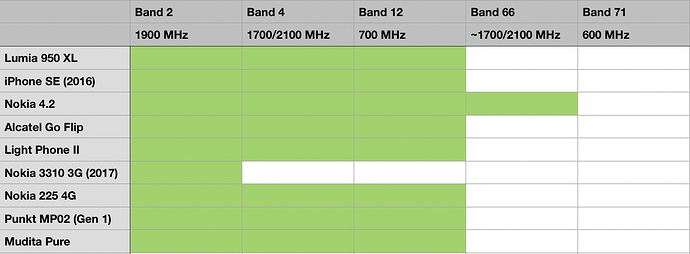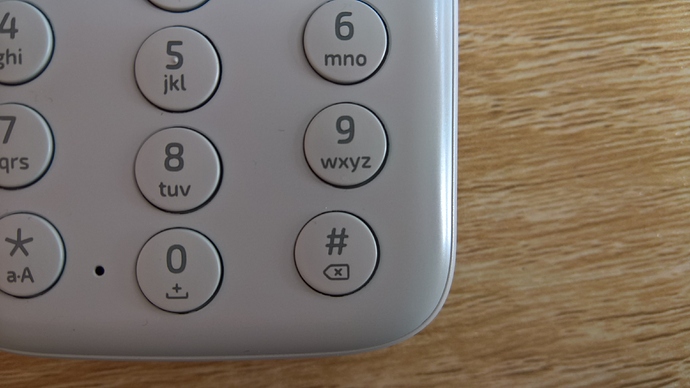The short of it: Mudita Pure is a work in progress that I cannot recommend. Originally, I was much more optimistic and intended to continue using it as my daily driver, despite its flaws. Halfway through my second week of use, its lack of signal strength made it a non-option.
Completed 04/10/22
Background
Since the end of 2017–at the crossroads of my destructive dependency on technology and the financial burden that came with it–I have been working to reduce my digital footprint.
Family photo: My past 7 years in mobile communication in rough order. (Not pictured: Alcatel Go Flip)
Transitioning from smart phones has been a significant part of that. Conceptually, I found this relatively easy: I’ve always been a bit on the fringe when it came to mobile communication. It wasn’t until grad school (2010) that I got my first real handset (an unidentified LG Android on Virgin Mobile). And since then, it’s been dalliances with Windows Phone/Mobile, unlocked Androids, third and fourth tier service providers (read: “inexpensive” — in the US this means T-Mobile and T-Mobile/Sprint MVNOs), and the cheapest buy-ins to the Apple ecosystem.
So when my aforementioned life shift hit almost five years ago, pushing it just a bit further felt trivial. Tired of a phone bill of $60(USD) a month (cheaper than average, mind you, for Unlimited Talk, Text, and Data) for services I was starting to abandon, I began to push for more simple devices and more restrictive cell providers.
Flash forward to 2022, where I sit with two SIMs on a T-Mobile MVNO–each commanding no more than $7(USD)/mo for adequate talk, text, and data. At least…adequate by the numbers.
What Mudita’s Up Against
If you’ve never used an MVNO in the US, good for you. I can’t seriously and uniformly pan them, of course: for a lot of people, these low-cost life-lines are the difference between ‘have’ and ‘have-not.’ These are the services with surmountable barriers that make or break the important things: getting jobs, submitting applications to schools, turning in class assignments, and calling for help in an emergency.
That said, you get what you pay for: MVNOs make it clear on no uncertain terms that you are merely a guest on a larger corporation’s network. You’re treated to a portion of the coverage at a fraction of the speed of what the main carrier -could- provide, and you’re told that–push come to shove–your data will take a back seat to the people paying full fare.
====BREAK====
And this is where my review takes an unexpected turn. If any of you have followed this thread, you’ll notice I was using the forum as an active template for a review, and about two weeks ago, stopped at the break point above.
I wanted to compare Mudita Pure to the devices in my life that came before it. Point out the hardware and software flaws, and the improvements that were being made with software updates. But I’ll leave the details on (some of) the troubles I’ve been having in these threads:
But these issues aren’t what changed my mind on Pure. Unfortunately, my second and third weeks with the device have been abysmal. Despite software improvements, the combination of weak signal and MVNO band support in the US (plus the sub-part MVNO service experience I’ve been having lately–no fault of Mudita’s) have made Pure all but unuseable.
I’m Finally Done Fighting The Good Fight
A bit dramatic, yes, but after 7 years of trying to find the best minimal phone experience on an inexpensive network, I’ve missed too many critical calls–namely from my partner–which have essentially left me unavailable in emergencies. The wind has been officially taken out of my sails.
I am fortunate enough to have the means to make my next move: transition to a more expensive carrier using a smart handset with radios that I -know- work in the US. It’s not what I want, but the market and the trends have too much momentum in this country. And while Mudita Pure was a premium device, I was hoping it’d be the kind of thing that would usher in a new era by providing an example of what a simple phone could do on a “modern” US network. I was hoping it would be a rising tide that would lift all ships badged Nokia, Alcatel, etc., improving the options for people who financially rely on the MVNOs. [As an aside: Mudita never aimed to be that, so it’s not fair to hoist that on them…but a man can dream.]
In the end I say this: Your mileage my vary with Mudita Pure: and I’m definitely guessing you’ll go further in other parts of the world.
The product is beautifully designed and constructed (if a bit creaky–see the button tolerances below). There’s brilliance in the hardware (Did you know the flashlight IS the flashlight button? This is smart because you can activate it while it’s still in its case). Its display sings in the sun. And I give Mudita credit for iterating on the software and showing marked improvements.
Tolerance on the button/body alignment.
I’d say, if you’re in the US–and you don’t mind the bumps in the road–keep your pre-order, but keep your old phone on you just in case. New buyers? Hold off.
Much love.


